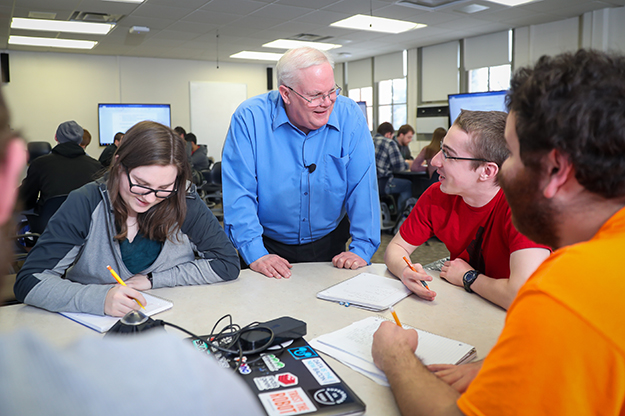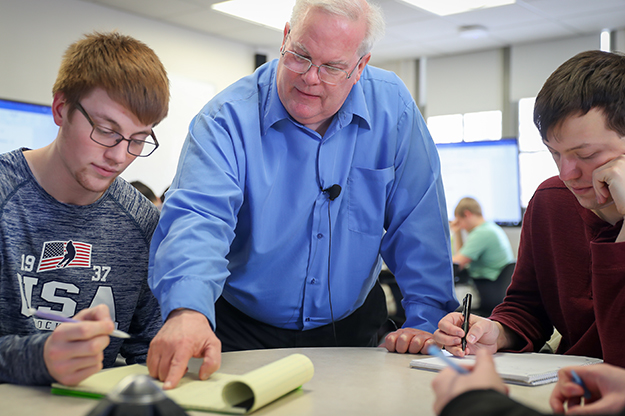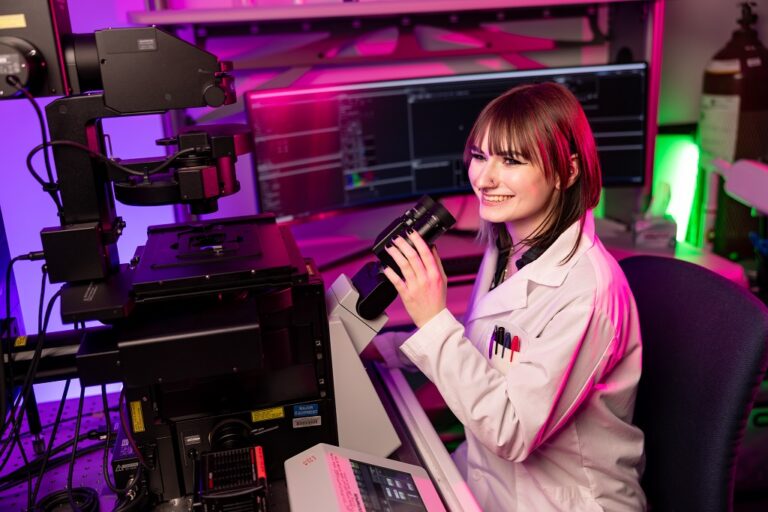Transformational teaching
Chemical Engineering Professor Wayne Seames on a mission for much-needed modernizing of core course

As a chemical engineer working in the process industries during the ’80s and ’90s, Wayne Seames was one of the game changers. He was a key participant in the digital technology revolution that changed how process plants were managed and controlled.
“The process industries are all about transformation,” Seames said. “You take stuff and make new stuff, adding value or making it less harmful. These industries turns bacteria into penicillin, crude oil into gasoline, yeast into alcohol, sulfur from power plants into fertilizer, and so forth.”
Today, Seames wants to achieve a different type of change. He hopes to transform how process control is taught in chemical engineering programs around the world in order to make the subject more relevant. So he engineered a revamped course and wrote a new textbook that may revolutionize how the subject of process controls and dynamics is taught.
Designing Controls for the Process Industries was released by CRC Press/Taylor and Francis Group in September. It took around four years to complete the project, which includes PowerPoint slides for each chapter, quiz questions, tools for flipped classrooms, and a homework solutions manual which was co-authored by Ian Foerster, his graduate assistant. Seames also developed the graphics and designed the book cover.
“I didn’t know I had it in me to do this,” said the Chester Fritz Distinguished Professor of Chemical Engineering, who is also the only person in North Dakota inducted into the National Academy of Inventors. “But I knew about 90 percent of the material, so I redesigned our version of this class and wrote the book.”
Engineering a course
After Seames left industry for UND and began teaching the senior-level process controls and dynamics course in chemical engineering, he realized that textbooks hadn’t evolved with the industry.
“I was looking forward to teaching this course and to see new textbooks that reflected this ‘revolution’ in process controls,” said Seames. “Imagine my disappointment when I found that all the major textbooks in this field were still following the same format and with essentially the same content as textbook published in the 1960s and 1970s!”
So he decided to write the book himself and asked students to test drive the material. Along the way, his course went from being one of the most disliked courses in the major to one of the most popular.
“Students are great at identifying where material is unclear and should be improved. They are also really good at finding typographical errors. Mostly they wanted more examples included with the text,” Seames said.
“This was one of the most easy to understand textbooks I’ve read,” said Jasmine Kreft, a master’s student in chemical engineering from Williston. “I didn’t have to read a paragraph 15 times.”
“I really enjoyed the class,” said Will Hammann, a combined master’s and undergraduate student from Grand Rapids, Minn. “Dr. Seames explained it totally differently, from the bigger picture rather than by explaining the controls themselves. He focused on the entire process. That helped me understand what we are trying to do with controllers. It was pretty helpful.”
“The way Dr. Seames teaches is more helpful to learn the way processes are controlled in industry,” said Brittany Rew, a master’s student from Roseville, Minn. “A lot of textbooks are hard to read. This was easy to read with a lot of examples that help you understand the material better.”

Revolutionary thinking
“There is a need to change the way we teach chemical engineering courses,” Seames said, adding that getting a book publisher was easier than he thought it might be. There is a need for something like this, he believes, citing a recent survey from the American Society for Engineering Education which found that many instructors teaching this course would like to change the course content.
“I wrote the book and tried it out first,” he said. “Then I sent inquiries to the four largest publishers of chemical engineering texts. CRC, the largest one, didn’t have a similar book, and a former faculty member at the University of Arizona, my alma mater, recommended his editor there. I sent some sample chapters and heard back almost right away.”
Preliminary feedback has been enthusiastic, but Seames said it’s still early, and his publisher is planning on doing publicity this spring for fall adoption. The international audience has already picked it up, he said, because they teach more applied programs.
Last summer, he led two workshops for new chemical engineering faculty at the ASEE Summer School for Chemical Engineering Faculty, where he presented the new material and how to use it. He also gave a similar presentation at the American Institute of Chemical Engineers Annual National Meeting in Minneapolis.
“It’s all about transformation and changing the paradigm,” Seames said. “This book is part of that.”


